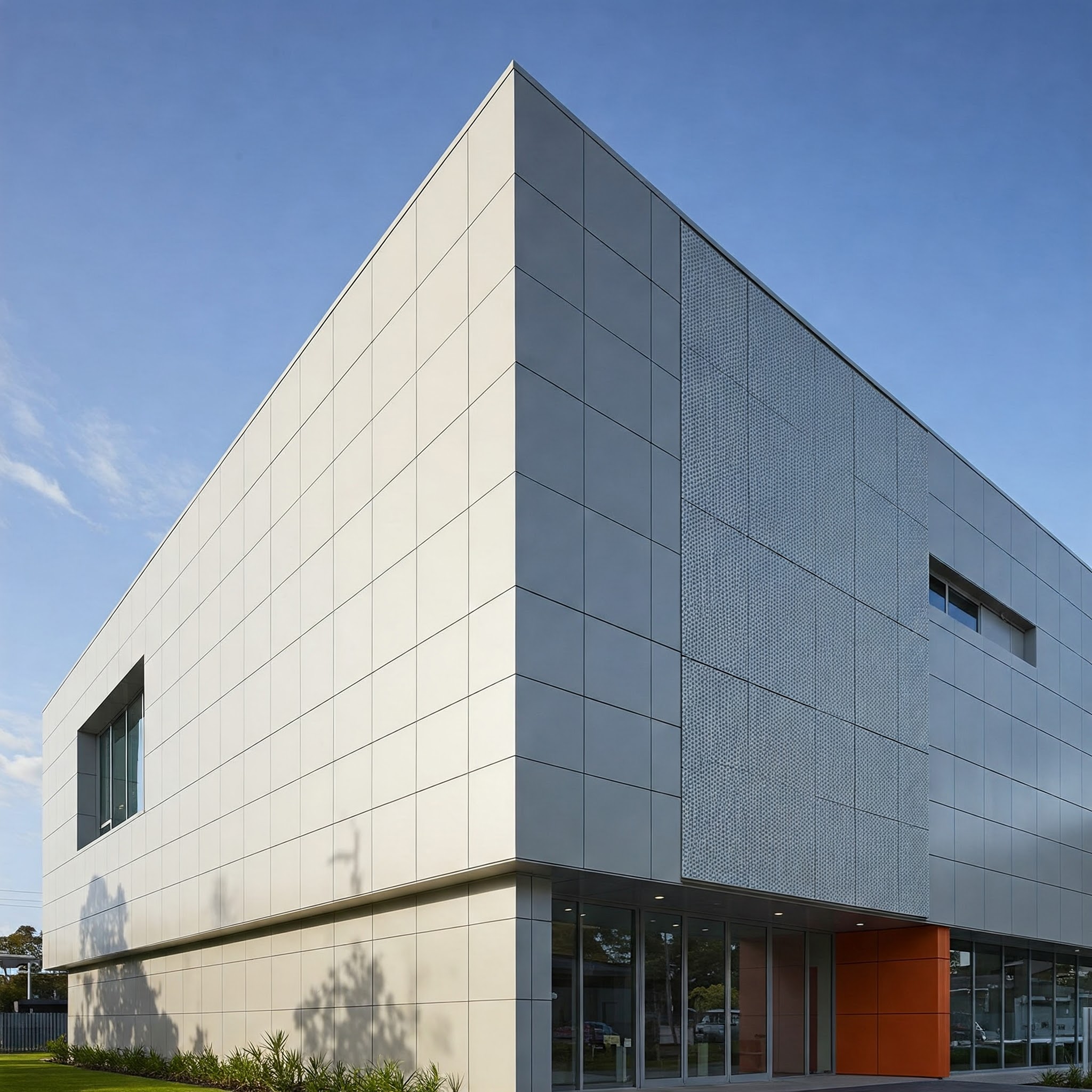Alucobond Installation and Cost Guide: Improving Contemporary Australian Architecture
Because it is flexible, useful, and beautiful, Alucobond has become a major material in Australian architecture nowadays. Valued for its capacity to bring in appeal and excellent finishes to both commercial and residential facades, Alucobond is a light composite material. It remains in more demand as modern and eco-friendly architecture becomes more sought. This tutorial gives you vital knowledge about the Alucobond installation procedure and Alucobond cladding price, which will enable you to make wise choices for your next project.
Which Visual Effects Can Be Made Using Different Kinds of Alucobond?
Alucobond cladding is quite flexible. It can support different visual effects, textures, and finishes. Usually, the material consists of two sheets of aluminum sandwiching a non-aluminum core, which guarantees endurance while offering a bright and modern look. Among the many looks and design motifs possible by using Alucobond installation are:
1. Glossy Finishes for Sleek, Contemporary Buildings
With its several glossy coatings, Alucobond gives your project a strong, lustrous appearance. Commercial buildings or high-end residential developments where a modern, high-tech look is sought often utilize this finish. It gives structures a graceful, polished impression because of its wonderful light-catching.
2. Matte Finishes for a Subtle, Contemporary Vibe
Matte-finished Alucobond installation nevertheless produces a softer look combined with the modern style of the material. For low-rise buildings or homes, matte finishes are suitable; for someone who wishes to attain a toned-down, yet highly modern look, they are perfect. The muted hue is a good choice for both metropolitan and coastal areas since it exudes a gentle, refined mood.

3. Textured Surfaces for a Distinctive Design Statement
Consider Alucobond with textured surfaces if you want a design that distinguishes itself from the crowd. From linear designs to embossed decorations, these choices produce striking facades that differ from the standard. Textured Alucobond adds flair and charm to any building, whether for a retail store, museum, or feature wall in a house.
4. Color Changes for Bold Statements
With its wide color palette, Alucobond makes it simple to fit the appearance of your structure. You may design your building to your taste, from calm hues to strong and vivid. When combined with a natural feature like wood or stone, a bright color can be excellent for producing a contrast; more subtle hues can blend into the environment.
Alucobond installation is appropriate for any use, whether it is an office building complex, a residential object, or even a public structure like a hospital or school, given the adaptability in finishes and color. Though its customizability allows it to fit any architectural style, Alucobond's contemporary look gives any design a feeling of invention and futurism.
Alucobond Installation Guide
To get the greatest outcome, the installation of Alucobond cladding has to be precisely designed and based on accuracy. The underlined actions below are the key components:
Planning & Preparation
First, the building must be assessed for suitability. Alucobond panels need a decent foundation, hence, the frame has to be square and level. To allow appropriate fitting of features like doors and windows, one must also consider them in advance.
Panel Cutting and Fitting
Usually, Alucobond panels will have to be trimmed to fit the structure. Great importance is cutting precision; usually, carbide-tipped blades for clean, smooth edges provide it.
Panel Installation
Screws and unique fasteners attach mounting to a substructure. Avoiding distortion or movement over time depends on appropriate placement and a firm grip.
Finishing Touches and Sealing
Weather-resistant sealer seals joints post-installation to stop water exclusion. Trim pieces finish cut edges, thereby producing a clean, sturdy, and attractive look.
Following these procedures by a knowledgeable construction crew will help you have a hassle-free Alucobond installation that enhances the look and use of your structure.
Alucobond Cladding Cost in Australia
The installation price of Alucobond will cover material and labor expenses. Depending on the finish, color, and design intricacy, Alucobond cladding price in Australia can vary from $50 to $150 per square meter. Depending on high-end finishes or unique designs, the price could be greater. Depending on the complexity of the project, the installation labor cost could range from $55 to $80 per hour.
Although Alucobond prices differ, keep in mind that mass orders from overseas suppliers, typically ranging from $3.00 to $15.00 per square meter, may seem cheaper. These prices, nevertheless, are for bulk buys—at least 500 square meters—and may not include shipping or import taxes from local governments, hence greatly increasing the final cost.
Local contractors and suppliers will give a better estimate for the smaller or more intricate tasks. Alucobond installation is worth investing in despite the expensive initial cost since it offers long-term advantages like strength, cheap upkeep, and better thermal performance.
Local contractors or suppliers who can provide a customized estimate based on your project requirements should be contacted to obtain an approximate quotation. Alucobond, in brief, is a unique and flexible product that improves the use as well as the look of contemporary Australian construction. Knowing the costs and providing an appropriate Alucobond installation guide can guarantee a long-lasting solution for any project, hence ensuring a visually appealing and sustainable result.
Published 5/8/25